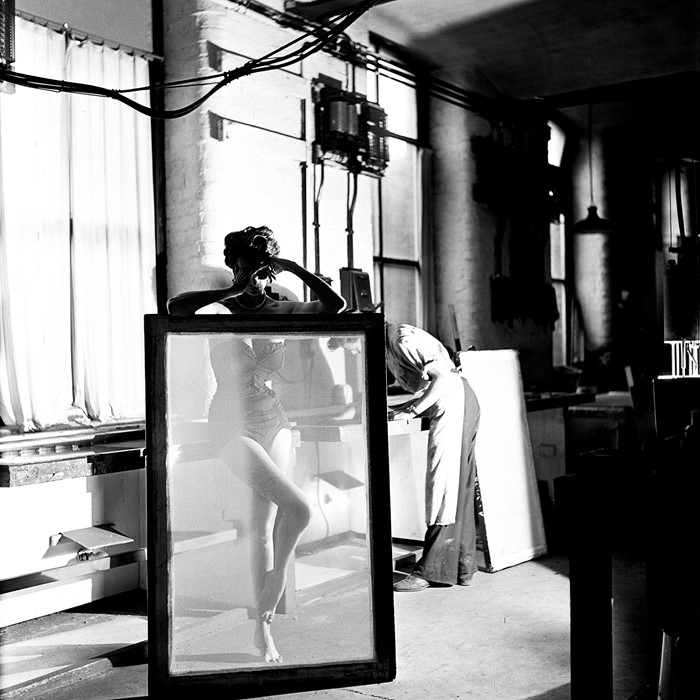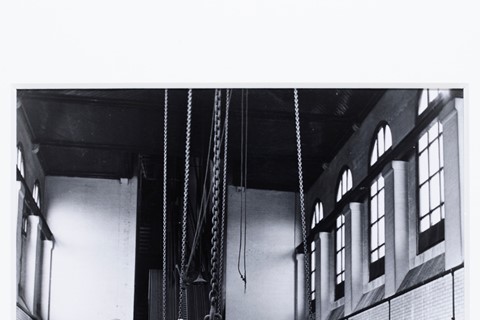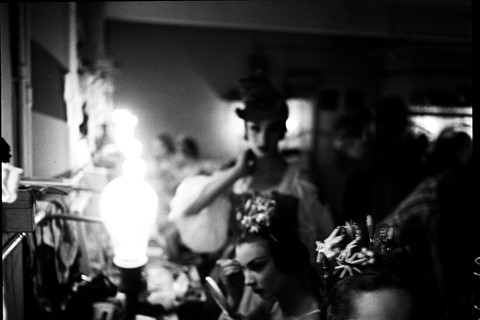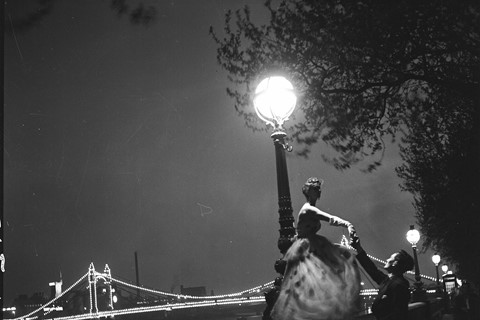Elsbeth Juda struggled to find work when she escaped Nazi Germany for London in 1933 – but within a couple of years, she had become one of her era’s most sought-after talents
Who? When the Nazi occupation began in earnest in Germany in 1933, photographer and art director Elsbeth Juda, whose husband was on a wanted list of subversive intellectuals, escaped to London with nothing but two suitcases and a violin. But once in England, Juda struggled to find work; a Jewish émigré and a married woman, she hardly felt herself welcome in the workplace. In search of resolution, she reinvented herself as a ‘darkroom boy’ in Soho’s Dean Street, working under the name ‘Jay’, and it was in this red-lit room that her love of photography grew and she learned to process colour film. She finally got her lucky break when, while working on a job in Soho, the usual photographer was running late; Juda was asked to stand in, and the shoot was such a success that she was soon promoted to photographer. Over the 45 years that followed, she went on to work for magazines such as Harper’s Bazaar.
Around the same time, Juda had set about establishing a London office for the Dutch trade magazine International Textiles with her husband. In 1946 they reinvented the magazine as their own, calling it The Ambassador: The British Exports Magazine. The pages instantly provided them with the means to forge links between artists, manufacturers, and retailers all over the world; László Moholy-Nagy came on board as art director and his ex-wife, the Bauhaus photographer Lucia Moholy, spent her spare time teaching Juda how to navigate the weighty, but rewarding, Gandolfi box camera. Artists such as Graham Sutherland and John Piper were invited to design covers, textiles, and provide illustrations, and soon Juda and her husband found themselves at the centre of the cultural milieu during the 1940s and 50s. Norman Parkinson was a friend, and Benjamin Britten often came round for tea.
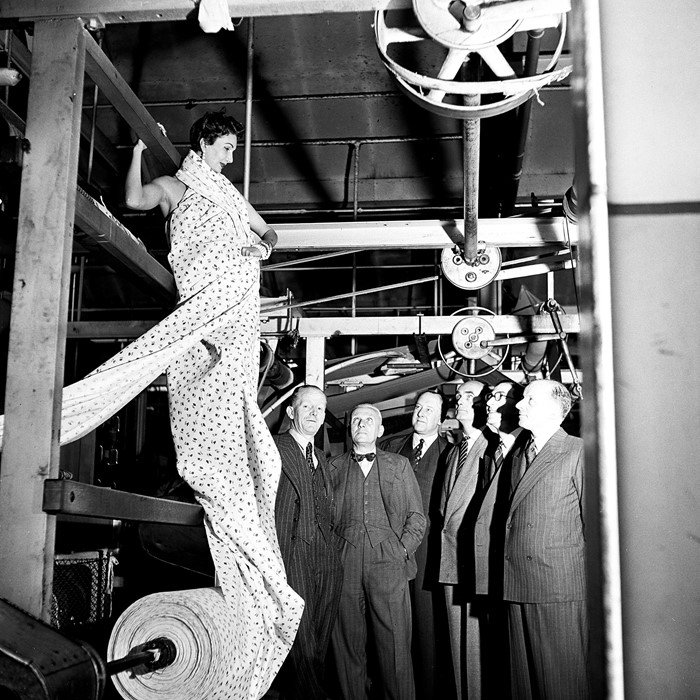
What? Finally a long anticipated retrospective of Juda’s work is on show at the Jewish Museum in London. With a selection of images from The Ambassador alongside intimate portraits, there’s a real sense of the range of Juda’s eye. Her friend Henry Moore is depicted in his studio, studiously carving in preparation for the coronation of 1953. Winston Churchill puffs at a cigar, while moodily posing for his portrait by the painter Graham Sutherland.
Nonetheless, it’s her iconic images from The Ambassador’s pages that capture one’s attention most clearly. Juda herself recalls that for the “cotton issue” she took the model Barbara Goalen to the Calico Printer’s Association in 1952. “Instead of having 18 fabrics just laid out, I said: ‘Let’s try something.’” Composition was key. The resulting image sees Goalen swathed in a huge sheet of cloth on the roof of a Lancashire mill, poised to perfection as an awkward salesman holds her wedding-like train. In another, Goalen scales a ladder, the austere backdrop of the factory floor contrasting with both the admiring members of the Calico Printers’ Association, looking up from below, and the billowing patterned fabric clinging to Goalen’s body as it rolls off the production line. A Rapunzel in a very modern iron-beamed tower, the juxtaposition of soft Scottish textiles with heavy machinery perfectly encapsulates Juda’s visual prowess behind the camera.
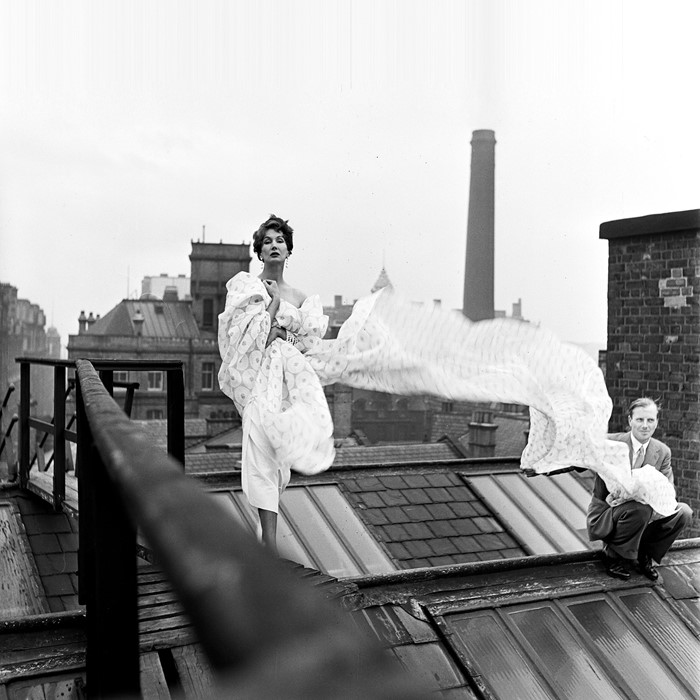
Why? Although she had a highly successful commercial career, it has taken time for Juda’s work with magazines and advertising agencies to be viewed seriously. “If you can find pleasure and fun you become inventive” she once noted, and this element of surprise in a shoot was vital for Juda. Whether with unexpected props (why not pet a parrot?), or outlandish backdrops (skiing in high-heels is easy right?), she always seemed to have something up her sleeve to surprise her audience. Her work for The Ambassador became a key force to reinvigorate Britain’s textile industry in the post-war years, providing a platform wherein Britain could once again have a voice on an international scale. Her importance in bringing a Modernist edge and eye to English shores has yet to be fully recognised; thankfully this retrospective may mark the start of a fuller appreciation of Juda’s extensive and intriguing oeuvre.
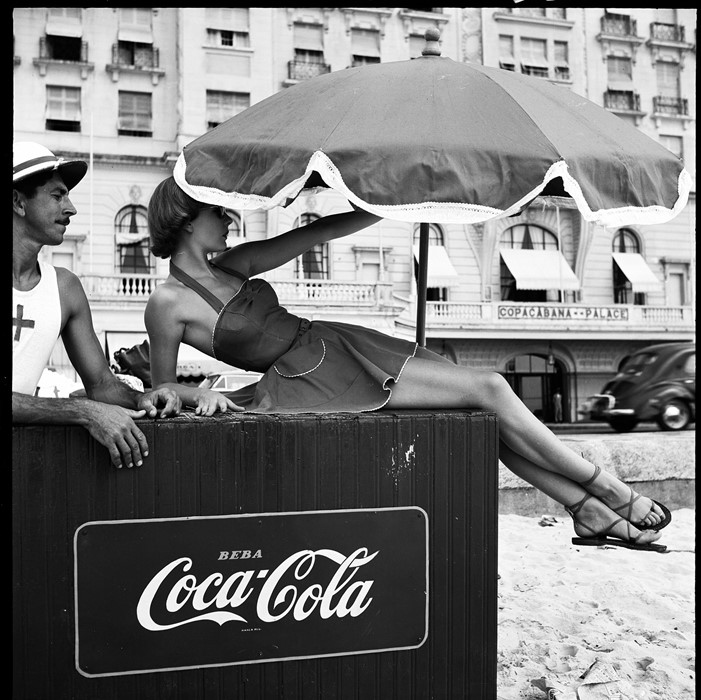
Elsbeth Juda: Grit and Glamour runs at the Jewish Museum in London until July 1, 2018.
